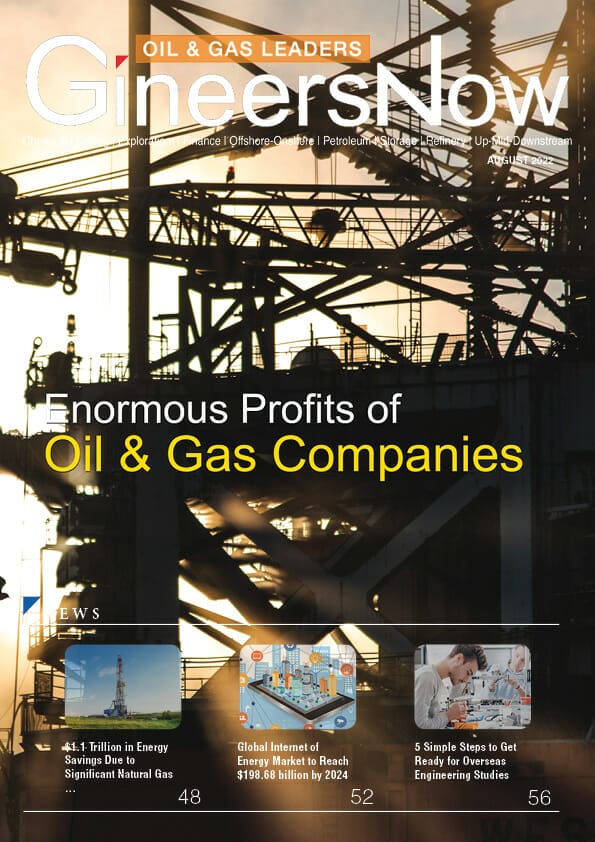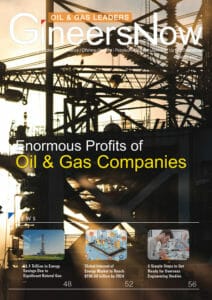The enormous profits of oil and gas companies around the world.
28 of the top oil and gas CEOs earned $394 million in salary last year, an increase of over $45 million from 2020. Shell’s earnings increased by 180 percent over the first quarter of 2021. In 2021, Shell generated total profits of $19.3 billion. For affluent stockholders, Shell purchased back $8.5 billion worth of shares.
For the world’s major oil and gas businesses, war and climate collapse have proven profitable, with financial records revealing that 28 of the largest producers generated close to $100 billion in combined profits alone in the first quarter of 2022.
Following Russia’s invasion of Ukraine, oil commodity prices surged, resulting in $93.3bn in total earnings for major fossil fuel companies from January to March.

During this time, Shell earned $9.1 billion in profit, almost three times as much as it did in the same period in 2021, while Exxon made $8.8 billion in profit during the same period, again nearly three times as much as in 2021.
BP’s first-quarter earnings of $6.2 billion were the company’s biggest in a decade, while Chevron’s grew to $6.5 billion. Texan-based Coterra Energy enjoyed the highest relative windfall of the 28 businesses, with a 449 percent boost in earnings to $818 million.
Share buybacks and dividends have been implemented by a number of corporations as their earnings have skyrocketed, despite the fact that inflation has been rising in many nations.
CEO Ben Van Beurden of Shell remarked that the macro has been touched by the war situation in Ukraine and that Shell’s performance was “helped” by the macro. He added that they do have a better firm and a better performance that will certainly be enjoyed by their shareholders.
In February, BP CFO Murray Auchincloss even said that they’re seeing the possibility of having too much cash on hand.

What happened to switching to renewables?
Campaigners on the issue of climate change, however, have slammed the earnings as “obscene” and said that if governments had taken the necessary steps, fossil fuels would not be so lucrative.
According to advocacy organization Climate Power’s Lori Lodes, the greed of these firms is astonishing. Inflation and the crisis in Ukraine have enabled their bosses to boast about how much they’ve been able to hike prices and how profits from these sales are flowing directly to their bank accounts.
It is shocking to see an increase in profits for the world’s oil firms despite scientists’ warnings that the world must swiftly phase out fossil fuels if it is to prevent unleashing catastrophic heatwaves, droughts, sea-level rises, and other increasing repercussions of the climate emergency.
The oil and gas industry’s riches also show that the destruction of a habitable environment still generates considerably more revenue than attempts to sustain it.

183.9 Billion Huge Profits of Oil and Gas Companies
As of 2021, the 28 largest oil and gas firms generated a total of $183.9 billion in profits, dwarfing numerous big, but ineffective, climate policies. With the promise of $100 billion a year in aid for developing countries still unfulfilled and the largest piece of legislation in US history scuttled by Republicans and the pro-coal Democratic senator Joe Manchin, it’s clear that the wealthy countries are not doing enough to help developing countries cope with climate change.
According to the International Energy Agency, no new oil, gas, or coal mines can be built if the world is to achieve net-zero emissions from industrial heating by 2050. For the earth to avoid exceeding a 1.5C temperature increase over pre-industrial times, which experts say would bring cascading calamities, almost two-thirds of all recognized oil and gas reserves must remain in the ground.
High-profile environmentalists, on the other hand, are concerned about a slew of new “carbon bomb” oil and gas projects that might derail international climate targets. In April, UN Secretary-General António Guterres remarked that investing in new fossil fuel infrastructure is moral and economic lunacy.

There is a perception that climate activists are dangerous extremists. Countries that are boosting their output of fossil fuels, on the other hand, are the real radicals.
US Vice President Joe Biden has complained that gasoline prices have stayed high despite a recent drop in oil prices. A new windfall tax on oil companies, suggested by Democrats in Congress as a way to help Americans grappling with increasing living costs, is on the table.
The majority of the major oil firms now have their own environmental objectives, such as Exxon’s January commitment to reduce its own emissions to zero by 2050. However, instead of primarily focusing on consumer use of oil and gas—which accounts for the majority of pollution, they are mainly concerned with emissions emanating from the operations of drilling and delivering them.
Few businesses report on their investments in sustainable energy sources like wind or solar electricity or their initiatives to reduce atmospheric CO2. The companies that do provide these numbers demonstrate that these expenditures on environmentally friendly practices are a relatively small sidebar, generally only a few percentage points of total budgets.

How oil and gas companies make their money
How do oil and gas companies make money? It may seem like a simple question, but the answer is actually more complicated than one might think.
Oil and gas companies make money in a variety of ways, but the most common method is through royalties.
Other methods include production sharing agreements, bonus payments, drilling leases, and pipeline transportation fees.
Let’s take a closer look at each of these methods.
Royalties are payments made to a company for the right to extract oil or gas from its property.
The amount of the royalty payment is typically based on the amount of oil or gas produced.
Royalty payments can be a significant source of income for oil and gas companies.
Production sharing agreements are agreements between an oil or gas company and a government entity in which the company agrees to share production with the government.
Oil and gas companies have a few different ways of making money. One way is to produce oil and gas from wells, which they sell to refineries or other buyers. They also make money by providing services such as drilling, fracking, and well testing. Finally, they make money from selling products such as drilling muds, pipes, and chemicals.
Oil and gas companies are often criticized for their profits. However, it’s important to remember that these profits pay for the salaries of thousands of workers, the cost of drilling new wells, and the exploration for new oil and gas reserves.
Profits of oil and gas companies and impact on society
The public is greatly impacted by the profits of oil and gas companies. For one, people are greatly affected by the prices of gas and other forms of energy. When oil and gas companies make a lot of money, they can charge more for their products, which in turn raises the prices that everyone pays for goods and services. Additionally, these companies often use their wealth to influence politics. They may donate to political campaigns or lobby legislators to get what they want. This can have a big impact on how laws are written and how taxpayer money is spent.
The cost of drilling and huge profits of oil and gas companies
As oil and gas prices have rebounded in recent years, so too has drilling activity. But the high cost of drilling is keeping many producers from making money, despite the increased prices.
The average cost to drill a new well in the United States is about $7 million, and that number is only going up. In some cases, it can cost up to $12 million to drill a new well. For a company like ExxonMobil or Chevron, that may not be a big deal. But for smaller producers, it’s a much harder pill to swallow.
Drilling costs have risen due to a number of factors, including higher labor costs, more expensive equipment, and stricter regulations. And with oil prices only expected to stay around $50 per barrel for the foreseeable future, most producers are struggling to turn a profit.
Profits of oil and gas companies and the huge tax breaks that they receive
Oil and gas companies are making a killing off of the American people. They are receiving huge tax breaks, while the rest of us are struggling to make ends meet. These companies are already extremely profitable, and yet they continue to receive billions of dollars in subsidies from our government. This is outrageous!
We need to end these tax breaks, and invest that money in renewable energy sources instead. We need to move away from fossil fuels, and towards sustainable alternatives. This is the only way we can ensure a bright future for our children and grandchildren.
Profits of oil and gas companies and environmental impact
The oil and gas industry is a key part of the global economy, but its environmental impact is often overlooked. The industry is responsible for emitting greenhouse gases that contribute to climate change, and it also produces toxic wastewater that can contaminate water supplies. In addition, oil and gas companies often operate in sensitive environments, such as rainforests and coastal areas, where their activities can damage ecosystems.
Despite these impacts, the oil and gas industry continues to be extremely profitable. In 2017, the top five publicly traded oil and gas companies earned a combined profit of $224 billion. This profit comes at a cost to taxpayers and the environment. The oil and gas industry receives billions of dollars in subsidies from governments around the world, and its pollution causes significant health problems for people living near extraction sites.
Click below to read the magazine: Profits of Oil and Gas Companies
Click here to download the magazine: Profits of Oil and Gas Companies
Click here to read on Yumpu: Profits of Oil and Gas Companies













